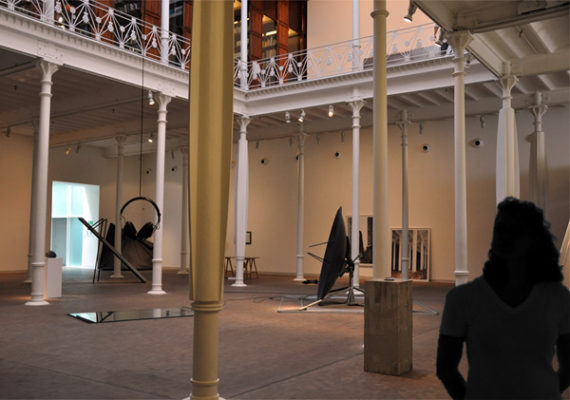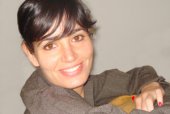Search
To search for an exact match, type the word or phrase you want in quotation marks.
A*DESK has been offering since 2002 contents about criticism and contemporary art. A*DESK has become consolidated thanks to all those who have believed in the project, all those who have followed us, debating, participating and collaborating. Many people have collaborated with A*DESK, and continue to do so. Their efforts, knowledge and belief in the project are what make it grow internationally. At A*DESK we have also generated work for over one hundred professionals in culture, from small collaborations with reviews and classes, to more prolonged and intense collaborations.
At A*DESK we believe in the need for free and universal access to culture and knowledge. We want to carry on being independent, remaining open to more ideas and opinions. If you believe in A*DESK, we need your backing to be able to continue. You can now participate in the project by supporting it. You can choose how much you want to contribute to the project.
You can decide how much you want to bring to the project.

A solo exhibition, in which works by various artists coexist. A proposition where signifiers and meanings place in doubt the roles involved in creation. The quotation, the reference, the work and the figure of the artist and curator are intertwined in an exhibition proposal that revolves around several questions. “In the First Circle” is a project by the British artist Imogen Stidworth.
Everything is bi-chrome, almost monochrome. Black-white. As if the exhibition display echoed the irreducibility of language, taking it to the ultimate extreme. To a limit that isn’t a limit because language absorbs everything, it was there before. Even before an inexistent structure, without which it wouldn’t be possible, situated as the origin of a without-origin that condemns us to eternal quotation.
Reducing as much as possible, in the search for an essence that never appears, like in the work by Werner Feiersinger, where the form contracts to eliminate anything “ superfluous”: geometry, plans, matter…sculptures that quote and transcend through ironic recourses the minimalism of another time. Reduction shows a way: tending to this limit that can only be transited by placing at risk the status quo in which language itself operates.
The exhibition is proposed as an extension of the artistic practice of Imogen Stidworthy, who occupies the role of artist and also curator. Invited by the institution to develop a solo exhibition project, Stidworthy decides to place her work in dialogue with other artists who in some way or another form part of it. Quotation becomes an essential part of a project that, as well as dealing with the linguistic fact through certain encounters and/or transferences, in passing touches on the question of the curator. The pieces here aren’t “illustrating” a discourse, either linguistic or of any other type, but insert themselves, undoubtedly in a procedural manner, in the artistic investigations Stidworthy has undertaken. The exhibition project in itself becomes in part a reflection on language. It is not just about an artist curating an exhibition while also including herself in it: In the First Cycle contributes to rethinking the function of the curator and situates the artist as subject as central to the critical discourse, in the company of Paul Domela, co-curator of the show.
It is not the first time she has recurred to “curating” to present one of her projects, she already did it in 2008 at the Contemporary Art Museum in Ambers. In the exhibition Die Lucky Bush, predecessor of “In the First Circle”, she invited different artists to reflect upon language and its limits by way of her video-installation “I hate” (2007).
The linguistic fact acquires a spatial dimension, transcending the pre-eminence of the oral, to centre on the material composition of things. In this sense, a return to the sign takes place, to the inherent materiality of language, which in the thought of Derrida dynamites the hierarchical opposition between the spoken and the written, responsible for the founding of phallogocentrism.
Something is constituted/instituted in the presence. Paul Domela and Imogen Stidworthy talk in the curatorial text of the importance of “living with”, of the meaning that arises through being “in the presence of”. However, presence is sometimes construed as the remains of something that is no longer present. Matter and writing, as opposed to speech, always seem to establish a distance.
The textual-oral transition is touched upon, in the audio by Caroline Bergvall “VIA (48 translations of Dante)” (2000), which explores one of the questions inherent in language: repetition. Within the exhibition, the piece itself functions as a citational element, as it explores the reading of texts from the initial tercet of the Infierno by Dante Alighieri, set “in the first circle” of purgatory, the limbo that welcomes those who, for not being of the Christian faith, can’t be condemned. The audio is tiring and repetitive: the narrative breaks with the alphabetical ordering of the textual fragments extracted from the archive of the British Library. The repetition works to unveil its impossibility, anchored in the lack of any origin. The continuous reading of the diverse fragments produces the mirage of the identical to finally evidence the interpretative multiplicity inherent in language. Language, never as something external to the subject, but internal, as something that one forebears.
The conflict of communication is present in many of the propositions of the exhibition. The Lacanian affirmation “language is of no use” strikes through the transference of meanings between languages, by way of the complicated relation between words, sounds, texts and images; verifying the difficulty implied by any attempt at communication.
If language is the capacity to substitute something for something, the processes of signification can implicitly carry the possibility of failure. In “Sin Título (Kalero)” (2009), Asier Mendizabal explores the disjunction between signifier and signified, through forms that are charged with significance in specific contexts. The inexact potential of certain signifiers to be fixed in meaning shows that the signifier rarely pertains to us, but is inserted within a citational network. This interpretational equivocacy can be converted into a doubled edged sword: to be as in this case an instrument of power, or to become the possible inversion/subversion of the same.
“In the First Circle” draws together proposals by 26 artists (some more pertinent than others) that together perform an interesting meta-linguistic dissection. Language is deployed to show the infinity of reflections that arise in reconsidering it. The exhibition has had few reviews. It has been alluded to as “cryptic” a description that ends up being habitual when analysing some contemporary art proposals. As ever, the possible layers of reading, of both the show and the pieces that it is made up of, are many. Depending on the level of interest, both the public and specialists can gain access to a more complex approach. It occurs with “In the First Circle”, but would also occur with Las Meninas by Velázquez. It is not about any inscrutability inherent in certain contemporary art proposals so much as the lack of analytical perspective that at times underlies this type of appraisal.
In short, the discursive lines that the exhibition opens up are multiple, maybe because language is in everything, prior to our constitution as subjects, determining the production of any subjectivity. In this sense one misses some type of reflection that integrates the contributions of so many feminist artists and feminist theories, fundamental when analysing the question of language.

Maite Garbayo is a writer and researcher. Art history, feminist crticial theory and pyschoanalysis are a few of the tools of her trade. She combines her research and writing with periods of teaching. Currently, she is working on her doctoral thesis and is the editor of the magazine {Pipa}.
"A desk is a dangerous place from which to watch the world" (John Le Carré)